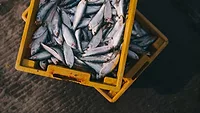FDA Releases Video Detailing Requirements for Seafood Imports

Image credit: FDA
The U.S. Food and Drug Administration (FDA) has released the third video in its "Importing FDA-Regulated Products" series. The new video provides an overview of the process for importing seafood, focusing on key regulatory requirements. It is designed to help importers, brokers, and foreign seafood producers better understand the steps involved in bringing safe and compliant seafood into the U.S.
Key topics covered in the video include:
- Regulatory requirements for importing seafood
- Information to provide to FDA during the import process
- What to expect during FDA's import review.
This video is a valuable resource for ensuring that seafood imports meet U.S. safety standards and regulatory requirements. It will soon be available in Spanish and Mandarin Chinese. The video can be viewed on FDA's YouTube channel.
Importing Seafood Overview
Imported seafood must be pure, wholesome, safe to eat, produced under sanitary conditions, and contain informative and truthful labeling in English. FDA does not certify, license, or otherwise approve individual seafood importers, products, labels, or shipments prior to importation.
Most facilities that manufacture, process, pack, receive, or hold seafood must register with FDA every two years.
Seafood producers and importers must comply with seafood safety practices such as Hazard Analysis and Critical Control Points (HACCP) systems, Preventive Controls, and Good Manufacturing Practices (GMPs). Additional requirements such as Low Acid Canned Food and Acidified Food registration and listing and National Shellfish Sanitation Program (NSSP) requirements may also apply to some seafood products.
FDA must receive notification before seafood, or any food, is offered for import into the U.S. The purpose of prior notice is to provide FDA with the information necessary to determine if an imported seafood shipment presents a threat or serious risk to public health and to more effectively target inspections.
Looking for quick answers on food safety topics?
Try Ask FSM, our new smart AI search tool.
Ask FSM →
At the time of importation, FDA will verify compliance with applicable requirements. FDA also conducts field examinations and analyzes samples of seafood to ensure that they comply with applicable standards and/or labeling requirements.
Additionally, FDA checks the import alert database to ensure that a manufacturer or product is not subject to detention without physical examination (DWPE) and listed on an import alert.








